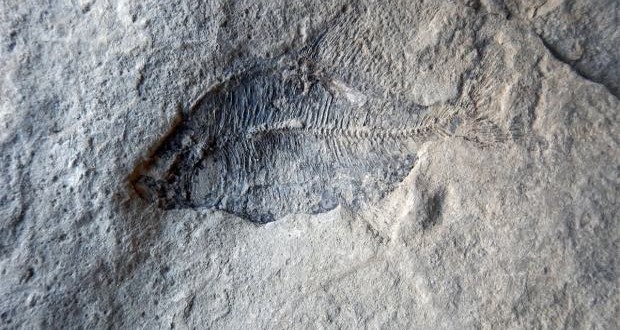A school of fossilized fish estimated to be 60 million years old was discovered in the basement of a new development in northwest Calgary.
Darla Zelenitsky, a paleontologist and assistant professor of geoscience at the University of Calgary, was called to the site of a housing development in early April to investigate some fossils.
Edgar Nernberg, who works at Keystone Excavating, was digging a basement in the northwest community of Evanston when he came across the fossils of five fish in the sandstone rock that lies under most of Calgary. He emailed a picture to Zelenitsky and she knew it was a find worth investigating.
Zelenitsky said she was initially skeptical because complete fossils are rare from this time period. But once she saw the photo she changed her mind.
“My first thought was, ‘Oh my goodness, this is really significant,’” Zelenitsky said. “Because we just don’t find that many complete fossils in this rock.”
Fossils are dated based on the age of the rock they are found in. In the case of these fish, they were discovered in the Paskapoo Formation, which is around 60 million years old.
These five fish would have been swimming around Calgary back when the Rocky Mountains were still being formed and the land was covered in deciduous forest. The climate would have been more temperate than it is today and large rivers were depositing silt on what would become the plains. Zelenitsky says these fossils shed light on a world recovering after the mass extinction of plants and animals, including the dinosaurs.
“Plants and animals were basically recovering from this extinction and they were starting to diversify,” Zelenitsky said. “In order to learn about the ecosystems at the time it’s nice to know what kinds of animals were around, or plants, just so that we have an idea of how the ecosystems recovered.”
This school of fish are a primitive part of the family commonly called “bony tongue,” which includes the common goldfish. The fossils will be cleaned and prepared for research at the Royal Tyrell Museum in Drumheller and Zelenitsky says it’s possible that they will be a brand new species or tell us more about where a known species lived.
Because complete fossils like these are so rare, most ancient fish in the province are only known from bone fragments.
“Fish are mostly known in Alberta from sites where you just find little bits of bones and teeth so they’re just fragmentary remains,” Zelenitsky said. “So now that we’ve got these complete fish, once they’re cleaned up we can actually use them to identify some of these fossil fish bones, some of these isolated or broken bones.”
The Paskapoo sandstone isn’t exposed in much of Calgary, but Zelenitsky says there are places where it’s visible, like the riverbanks.
“We know that fossils are there, it’s really just a matter of finding them,” she said. “I’m hoping that with this discovery … maybe people will keep their eyes out, you know, when they’re passing by these sandstone blocks.”
Agencies/Canadajournal

 Canada Journal – News of the World Articles and videos to bring you the biggest Canadian news stories from across the country every day
Canada Journal – News of the World Articles and videos to bring you the biggest Canadian news stories from across the country every day

